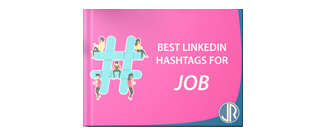Building up Social Media Marketing Strategy
Nowadays most companies move to the Social Media world without considering constructing a strategy. Like for all marketing activities, expecting a return on investment requires establishing a protocol of action.
What are Social Media
In order to define the scope of this article, I would like to start with the basics: what are Social Media?
Social Media are all the platforms that efficiently provide companies and individuals with horizontal communications.
Using Social Media as a marketing tool implies accepting this horizontal communication and consequently accepting that customers and strangers could share a different or even a negative opinion.

Why a strategy?
If we accept that moving to Social Media is a marketing activity that aims to either raising brand awareness or increasing sales, therefore, like all other marketing activities, Social Media platforms require a clear strategy to become efficient tools. You wouldn't invest money in a TV spot without strategy. You shouldn't invest time on Social Media without a strategy.

The key elements
Before even thinking about your strategy, you will have to answer some essential questions. The answers to those questions represent key elements that will be the very foundations of your strategy.
- What platform will I use?
- What is (are) my goal(s)?
- How much time am I willing to invest?
- What type of content am I able to produce?
The platform you will use
I will not develop this point much because I already wrote an article in the past covering this topic. If you haven't read it yet or if you believe that Facebook is the perfect platform for any business, I encourage you to read "Which Social Media platform is the most adapted to my business model?".
To summarize this question, it mainly depends on your market: who are your customers and how can you reach them?
If you have already defined buyer personas, that shouldn't be difficult to define a way to reach them (you can learn more about buyer personas reading "Target your customers precisely with buyer personas"). Otherwise, you will just need to make some research to find out who they are, what they like and which platform they use. You might be surprised to find out that Facebook isn't necessarily the best place to meet with your customers.

Your goals
That is what surprised me the most when talking with companies about their usage of Social Media. When asked "why do you use Social Media", the answer is almost always something between "to make money" and "to follow the trend".
The second answer is wrong by nature: you should never do anything to "follow the trend". It might be good to follow the trend, but there should be a reason for that, a purpose.
The first answer isn't quite right either: there is a (huge) gap between having a Facebook page and generating extra sales. Numerous studies have shown that having Facebook fans had little or no impact on sales ("Ecommerce customer acquisitation snapshot" from custora analyzes it well).
Your goal should be realistic: I want to increase brand awareness. I want to have 500 fans by the end of next month in order to deliver my message. I want to create a bond with my customers and give them a chance to share their opinion about my products.
Those are realistic goals. Moreover, you should set a timing for those goals. Having a deadline makes your goal more real and increases your chances of achieving it.
Also, a goal isn't set in stone: you must revise your goal every now and then. Especially when you either reach your goal or fail reaching it.
Before jumping into any Social Media strategy, take some time analyzing why you should do it and what you can expect from it.
The time you can invest
This is an essential point.
Like having a blog, having a Social Media page requires consistency and regularity.
Many companies have failed reaching their goals because of a lack of regularity. Those usually start very enthusiastic with 5 posts a day then end up with one post a month before totally giving up.
Define the rules based on what you are capable to invest. Defining borders is also important because it gives you a frame in which you can work without invading the time you should spend on other activities.
Once you know how much time you will spend per day and per week, you will be able to establish a publishing planning. Stick to it! If you define that you will publish one post a day, keep that rule at all time.

The content you can produce
Do you already know what you will talk about?
I have seen several companies failing with their online strategy because they didn't consider this point before starting. After a few weeks of posting promotion and advertisement, there wasn't much else to talk about.
Before starting random posting it would be interesting to identify what type of content you are really able to produce in the long term. What could you possibly talk about that could encourage your visitors to come back visiting you?
The strategy
Now you know what you want to achieve, where you want to work, how much time you will invest and what you can talk about. It is time to establish a clear strategy!
My plan will assume that you work on Facebook but the same can be applied to most Social Media platforms (Twitter, Pinterest, Youtube, etc.). Do not hesitate contacting me if you wish to discuss your personal case.

The content
I consider that all Social Media platforms display 3 types of content: informing, interacting and advertising.
- Informing: This is the most important type of content you should produce and it should represent approximately 50% of all your messages. By "informing" I mean all content that bring value to your visitors (by amusing them, informing them, entertaining them, warning them, etc.) and that isn't promotional. Talking about your product or service isn't informing. Try to add original graphics, pictures or videos to your posts: that will surely increase their viral potential.
- Interacting: Interactive posts are posts that directly engage a conversation with your fans. That type of post should represent about 35% of your total communication. Involve your fans, talk to them and ask their opinion or feedback. Don't forget: don't just ask them a question and ignore their answer. If they take time to talk to you, make sure to reply them! But this isn't a waste of time: besides involving them it will also help you gathering market data you might use for other purposes!
- Advertising: This is the type of communication the most used by companies but also the one that should be kept at lowest rate. Don't use it in more than 15% of your posts! People come to find something interesting. They will sure be glad to hear about your new product or promotion, but not if this is the only thing they find on your page.
The frequency
Depending on the platform you chose your frequency of posting should be different.
When it comes to Twitter or Pinterest, not only you should post often but also post at strategic times: as the flow of news is very large, if you don't want your post to disappear unnoticed you will need to send it at the right time.

For Facebook, the most important is to be regular. The frequency is quite free but should be reasonable: below one message per week your page isn't much alive, above 3 messages per day you become invasive and people might avoid you.
For other platforms such as Youtube or Squidoo, the most important element is the quality of the post, more than its frequency. Better have a very nice article or a very nice video every now and then than low quality ones every day: people will be waiting for your next edition.
The editorial planning
This is a piece of advice I give to anyone who wishes to publish anything, regardless its form or platform.
An editorial planning is the only thing that can prevent you from a shortage of content and insure you quality posting in the long term.
What is an editorial planning?
An editorial planning is a timeline on which you define what you will post in the future. The file contains information about the topics you will treat, the type of visual you will use, the time you will post it, etc.
Using such planning helps on three levels: first, you can plan way ahead. That means that there won't be a day where you will think that you have nothing to talk about. Second, you will have more ease organizing your content so that you do not make too much use of the advertising type and too little of the others. Finally, that gives you the opportunity to think your content through and develop it properly before posting it.
I have prepared a template of editorial planning for you to use if you are not sure how to make it. You can freely download it here: Editorial Planning for Social Media Marketing template

Next step
Now you have a strategy: you have a purpose and you have set the various guidelines that will bring you to that goal.
You might still be wondering about the type of content you should post on your page. If that worries you, I suggest you read my article "What should I post on my Facebook page?".
Do not forget: Social Media means horizontal communication. You must let your fans and followers share their opinion and comment freely on your pages. If you are not ready to do so, Social Media Marketing isn't made for you yet.
Make sure you reply all messages as fast as possible, even the negative ones. Here are some guidelines on how to handle negative posts on your page: "How to manage negative posts on my Facebook page?".
Now you should have all the tools in your hand to successfully handle your Online Social Media Marketing Strategy!
You can share your personal experience or questions with the community below, we will surely help you with your strategy!
Last update: 2024-04-22 Tags: social media facebook twitter pinterest online strategy marketing strategy web strategy editorial planning
















 Français
Français English
English